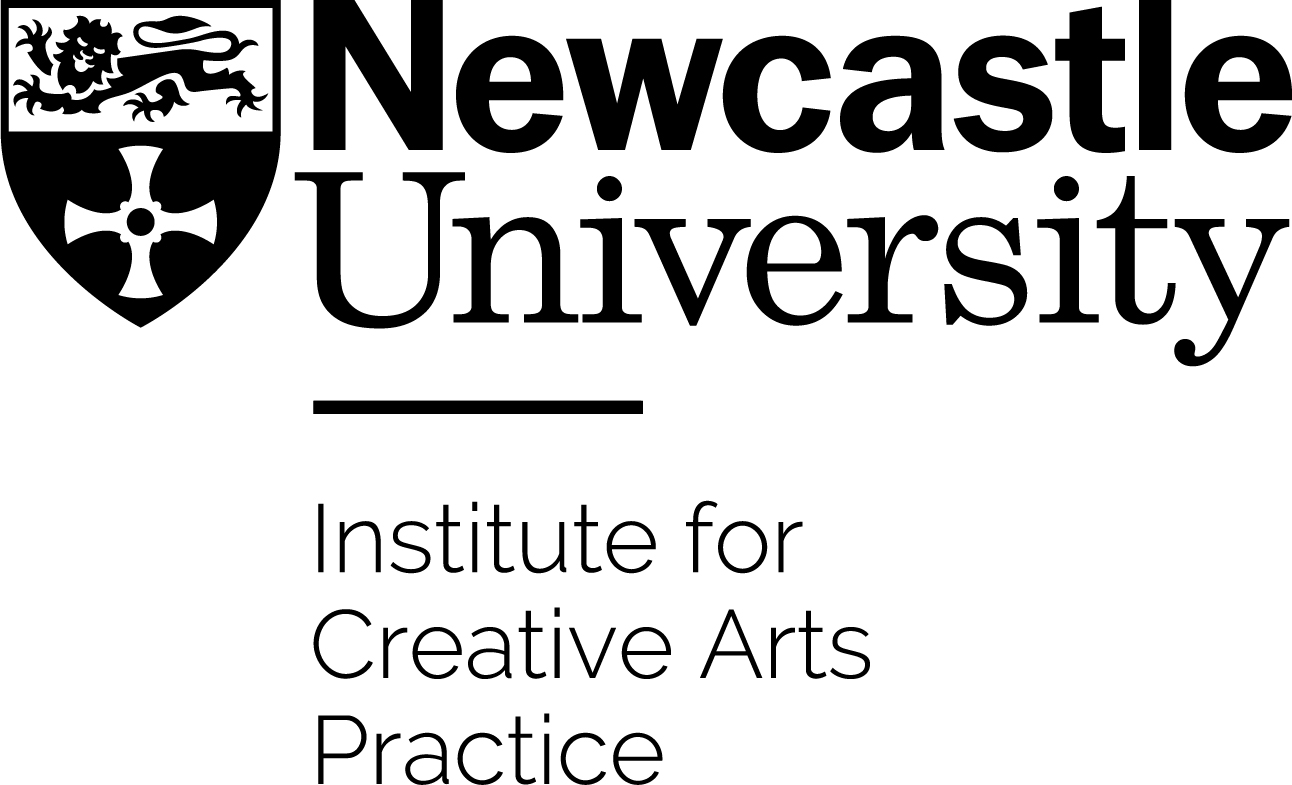Artists Reflections
An integral part of this project is having both participants and viewers to reflect on the meaning and impact of energy transitions in their lives. In this spirit, we have recorded below some of the exhibit artists’ own reflections about their work and how they developed their pieces.
Please note that your reflections are of equal worth and interest to the research team, so please share your own reflections using the feedback link.
Michael Cunliffe, Lay of Blyth
Even before I began work on this project, I was aware of my status as an outsider. Although I now live in the North East, I grew up in the rural South surrounded by arable farmland, with no family connection to heavy industries or personal experience of large scale engineering. No amount of research or study would allow me to place myself in the shoes of people who are intimately connected with the industrial and social landscape of Blyth. I decided to take this outside position as an opportunity to explore how the different voices involved in the decarbonisation agenda in Blyth coexist within a single, external narrative.
I was already familiar with much of the national and international story, with coastal and post-industrial communities (particularly in the North) being described in terms of deprivation and people ‘left behind’, in need of regeneration and rescue. Fossil fuel and shipbuilding industries are things of the past - either casualties of the Thatcher era, or outdated, dangerous things to be revolutionised and transformed. The overwhelming feeling is of an external force coming to make things better by brushing away the past, as promised each election year as a brief hard hat and hi-viz visit is made by politicians from Westminster.
As I explored archive images and oral histories of Blyth’s industrial past, watched presentations by researchers and engineers in decarbonising technologies, and visiting sites of interest in Blyth today, I was struck by a stark contrast to the national narrative, and the sense of continuity between these voices. Neither the reminiscences or projections of the future held the kind of romanticism of the working classes, or the idea of a magical solution that would change things in a short space of time were present and instead there was talk of dangerous challenges, hard work, and being part of something larger than individual action, underpinned by a tremendous sense of scale.
Looking at these stories from a symbolic perspective I saw the transition to green energy being evolution, not revolution. Blyth in it’s past produced energy from natural resources and fitted and recycled machinery that allowed those resources and energy to be transferred around the country. In a decarbonising industrial future, it would do this again. The tools will drastically change, but the substance of the action would not.
To create imagery that captured this concept, I fed the Blyth oral histories and green energy presentation audio into alternate stereo channels and listened to this as the basis for an automatic painting. During this process I interpreted and rendered the image that emerged, and I began to realise a single narrative for how I saw Blyth - stripped of the blue skies and romance of the clean energy future, or the judgement of its fossil and heavy industrial past: Blyth as a mythological figure - a toiling Prometheus bringing heat and light to the people by the innovation and effort of its people. The Coal of the past being intimately connected to and responsible for the Turbines of the present and future.
Beth J. Ross, Let Your Presence Lustrate Our Rapacious Hearts
I walked around Blyth, in the sun, in the wind, in the grey and in the rain. I drove around Blyth, in the sun, in the wind, in the grey and in the rain. I looked and I looked and I listened. I saw the people, I saw the buildings, I felt the history. I saw the wind turbine. I heard the wind turbine. I saw the wind turbine.I walked down to the beach. I walked along the quay. I walked past the Georgian houses. I walked past the Victorian terraces. I walked past the Art Deco cinema. I walked past the 1950s semis. I walked past the 1960s shops. I walked past the 1970s flats. I walked past the 1980s housing estate. I walked past the 1990s shopping centre. I walked past the newbuild apartments. I walked down to the beach.I thought about time, the time when Blyth didn’t exist. When there was just the sea and the sky and the river. Before the buildings, before the ships, before the trade, before the mines, before the things that were taken from the earth or from the people on the other side of the world, to make things, to make things for people, for people that wanted more. I saw the wind turbine. It turns, always, always there, like a totem. It turns, a prehistoric monolith, a pagan god. It turns, Like the hands on a clock, An obelisk to progress. I saw the wind turbine.Should we worship it? Would we worship it? Do we worship it?It gives us the things we want. Power. It gives us power. It gives us power to consume. It gives us power to make more, to use more, to make more, to use more. Power. It gives us power to consume. It gives us power, to make more, to use more. It makes the power without taking more from the earth, it makes the power without burning more from the earth. It makes the power to make more, to use more, to make more, to use more. It takes away our guilt. It gives us power. The sea and the sky and the river. The sea and the sky and the river. The sea and the sky and the river. The sea and the sky and the river will be there when we are gone.
Clifton Evers and James Davoll, Listening to Hope
To prepare for this soundscape art we took the time to get to meet people of Blyth. For two months Clifton met with people and spoke with them in the streets, at the quayside, in pubs, in cafés, and in the centre square. He recorded or made notes of key comments about hope and the transition to renewable energy industries in the area. James and Clifton also recorded sounds of Blyth that shape its atmospheres, including sourcing archival sounds that contributed so much to past atmospheres and that still resonate in today’s e.g., coal mining. They then mixed a ‘soundscape’.
As the process evolved Clifton and James spoke about how a common reason people undertake socially engaged art is to ensure those who normally do not get a voice get to contribute to policymaking and socio-technical decisions being made about where they live. Our aim was to initially prompt inclusion of a wider range of voices across multiple demographics in planning for decarbonising industrial transitions, voices that draw attention to the many related non-technical issues of responsibilities, burdens, vulnerabilities, exclusions, disruptions, differing values, benefits, burdens, destruction, adversity, hopes, and more. We wanted to bring attention to a ‘politics of listening’ that should be at the heart of any shaping of protocols of engagement between nature, infrastructures, government, industry, and residents. Ask yourself: Who gets to listen? Who has to listen? Who is heard and who is not? What do they hear? How do we listen across different value systems and contexts? How can we listen with intent and empathy to deepen understanding and create new worlds together?
Clifton Evers, Infographic
Infographics are often about communicating science to citizens. However, the science that they communicate can emphasise trying to pin down meaning and finding an over-arching truth and/or solution to a problem or issue. They often represent one world view, a scientific world view. However, by using performance art and an experimental film scene I wanted to nurture an appreciation of meaning-making through ambiguity, fluidity, and contingency that occurs with each other not only locally but globally, as well as with the non-human e.g., the fish from Blyth’s past fishing industry, the coal from its coal industry, lithium from deserts and seas. There are multiple human and non-human worlds inter-relating to create Blyth. The actors in the short experimental performance piece are Blyth residents with multi-generational histories of Blyth. They are Blyth. Their lives have been and continue to be created through a vast web of relationships. Coal used to influence how those relationships play out. However, now lithium could.
What happens here (e.g., building of batteries) is being shaped by over there (e.g., violent extraction of lithium from what can be sacred lands for indigenous peoples) and vice versa. I filmed the scene at the former Bates Pit as I understand that to be sacred ground too, given coal’s importance to what Blyth was and is as well. The closing of the Bates Pit and lack of support to transition away from it was violent. Never forget. Today, with the many promises of bright futures due to the possible building of a battery gigaplant and low carbon transition I want to prompt people to reflect on the questions: has the violence has stopped? If we understand Blyth as both global and local, as formed through its human and nonhuman relationships with elsewhere perhaps it has not. Blyth will be in a relationship with where extraction of lithium takes places, the sacred lands of others that make the future of Blyth possible.







